Best Canon lenses 2022: 23 top lenses for Canon DSLRs
Get the best lenses for your Canon DSLR
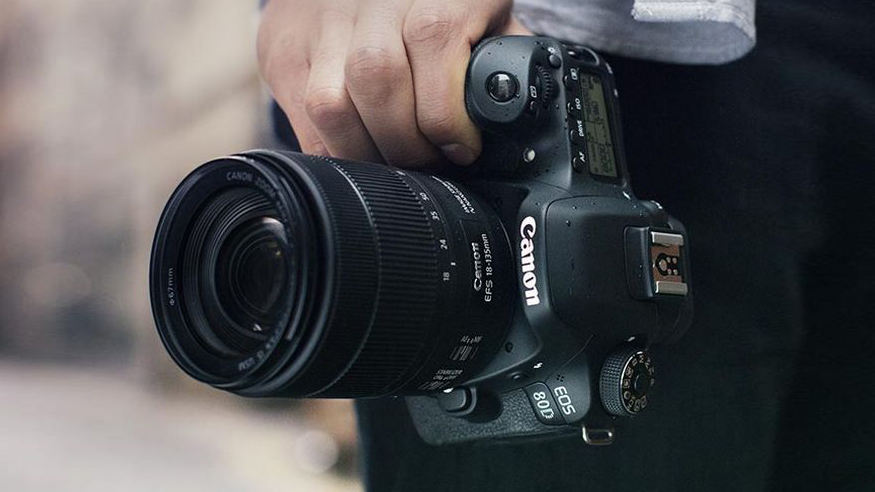
Choosing the best Canon lenses for your needs can be tricky. Canon’s EOS EF (Electro-Focus) lens mount stretches way back to 1987, which means it's a brilliantly mature system with lots of options. (Looking for the best Canon RF lenses for your mirrorless camera? Check out our separate guide on those).
With nearly 35 years under its belt, there’s naturally a vast range of lenses available from a wide range of manufacturers at different price tags, from double-digit impulse buys to multi-thousand-pound investments. We're here to cut through the confusion and help you choose the best Canon lenses for you.
The diversity of choice makes for some tough decisions. A starting point is to consider just how good your next lens needs to be. At what point are you happy to trade weight for image quality? How important is weather-sealing? Then there’s the question of using Canon’s own-brand lenses versus an increasingly high-quality range of options from third party manufacturers, who are taking the fight to Canon at everything from budget-friendly to professional-grade lenses.
We’ve got a separate guide on the best RF lenses for Canon’s full-frame mirrorless EOS R cameras but, for now, let’s focus on the best lenses for Canon DSLRs. We've split the guide into two sections.
In the first, we'll be looking at the best Canon lenses for APS-C format DSLRs like the Canon EOS 90D and Canon EOS Rebel SL3 / EOS 250D. After that, we’ll be moving onto full-frame compatible lenses for cameras like the Canon EOS 6D Mark II and Canon EOS 5D Mark IV. Whatever your Canon camera or budget, you'll find the best Canon lenses for you in this guide.
Jargon buster: lens types
Why you can trust TechRadar
Before we start, it’s worth getting the designations of lenses clear at this point.
Canon’s EF (Electro-Focus) lens mount dates back to 1987 and the 35mm film era. The EF-S variant was launched in 2003, to suit Canon DSLRs with smaller, APS-C image sensors (such as the 90D).
There are no problems using EF lenses on APS-C format cameras, but you can’t use an EF-S lens on a full-frame DSLR. The classifications used by Sigma are DC (APS-C) and DG (full-frame) and for Tamron it’s Di-II (APS-C) and Di (full-frame).
We’ve put all of the main contenders through their paces with rigorous lab testing and shooting in all manner of ‘real-world’ scenarios
Canon or third party?
If you’ve got a Canon camera, it might seem sensible to use Canon lenses. However, third-party lenses from the likes of Sigma and Tamron often give similar or even better performance than own-brand Canon lenses, and at more competitive prices.
For this piece, we put all of the main contenders in the various categories through their paces with rigorous lab testing and shooting in a variety of different 'real-world' scenarios.
From those results, here are the best-buy lenses for your Canon APS-C camera body. As well as outright winners in each category, we’ve included some best-value alternatives if you're on a tighter budget.

Best Canon lenses for APS-C DSLRs in 2022:

Wide-angle zoom: Tamron 10-24mm f/3.5-4.5 Di II VC HLD
Specifications
Reasons to buy
Reasons to avoid
A major upgrade from Tamron’s original 10-24mm lens, the ‘VC HLD’ edition adds image stabilization and a new autofocus system, which is quicker and quieter. Handling is also improved, because the focus ring no longer rotates during autofocus. The good-quality build includes weather seals and a keep-clean fluorine coating on the front element. Image quality benefits from good sharpness and contrast, along with well-contained distortions for an ultra-wide zoom lens, and fairly minimal color fringing.
Great-value option: Canon EF-S 10-18mm f/4.5-5.6 IS STM
Around half the price of the price of the Tamron 10-24mm, this is a top-value buy. It matches the Tamron’s maximum viewing angle, includes image stabilization and has a compact, lightweight build that’s well matched to bodies like the EOS Rebel T6 / 1300D and EOS Rebel SL3/250D.


Wide-angle prime: Samyang 10mm f/2.8 ED AS NCS CS
Specifications
Reasons to buy
Reasons to avoid
When you're 100% used to autofocus, going back to manual focus might feel like a backwards step. However, a lens like this gives you such a huge depth field and a short focal length that accurate focusing is less critical. Better yet, the Samyang's distance scale gives you the option to try traditional focusing methods for subjects such as landscape and street photography, such as setting the hyperfocal distance and 'zone focusing'. In terms of image quality, a smart design and high-quality glass helps ensure lovely sharpness, while nano-structure coatings help to keep ghosting and flare to a minimum.
Great-value option: N/A
Samyang's wide-angle prime is a bit of an anomaly, making wide-angle prime lenses for APS-C format cameras almost non-existent. You could try the Canon EF-S 24mm pancake lens, but by the time you take the crop factor into account, it's less 'wide-angle' and more 'standard'.


Standard zoom: Canon EF-S 17-55mm f/2.8 IS USM
Specifications
Reasons to buy
Reasons to avoid
This lens is now more than a decade old, but don't let that stop you from considering it. While the camera bodies of 10 years ago might look outdated nowadays, that's less of a problem with lenses where designs don't change quite so rapidly. This classic zoom lens is the only one on the list to feature a fast and constant (meaning that it's available through the whole zoom range) f/2.8 aperture, making it great for creating shallow depth of field effects and shooting in low light. There's also a range of enthusiast-friendly features such as ring-type ultrasonic autofocus and a focus distance scale beneath a viewing window. You pay a price for these great specs though, with it being the most expensive standard zoom for APS-C format Canon cameras - still if you need something versatile for everyday usage, it's a great option.
Great-value option: Sigma 17-70mm f/2.8-4 DC Macro OS HSM | C
This third-party option is fairly compact and lightweight. While it doesn't have the f/2.8 constant option of the Canon, f/2.8-4 is still fairly wide. It delivers impressive image quality and comes at a bargain price.


Standard prime: Sigma 30mm f/1.4 DC HSM | A
Specifications
Reasons to buy
Reasons to avoid
Canon's 1.6x crop factor makes this Sigma 30mm equivalent to around 48mm - that's pretty close to the classic 50mm focal length beloved by many. It's also one of Sigma's 'Art' class lenses, meaning that you get a beautiful construction, as well as a fast f/1.4 aperture. You get fast shutter speeds in low light without needing to boost your ISO settings, but you also get a nice and tight depth of field. Sharpness is impressively good, even at the widest available aperture. Meanwhile, autofocusing is fast due to the rear-focusing mechanism that drives the smaller, rear elements of the lens via a ring-type ultrasonic system. Further good news is that the front element neither extends nor rotates during focusing.
Great-value option: Canon EF-S 24mm f/2.8 STM
Teeny tiny and extremely lightweight, this 'pancake' lens is less than an inch in length and only weighs 125g. Although f/2.8 isn't a super fast aperture, image quality is excellent and it's a charming little prime lens for travelling light. What's more, it's super cheap, too.

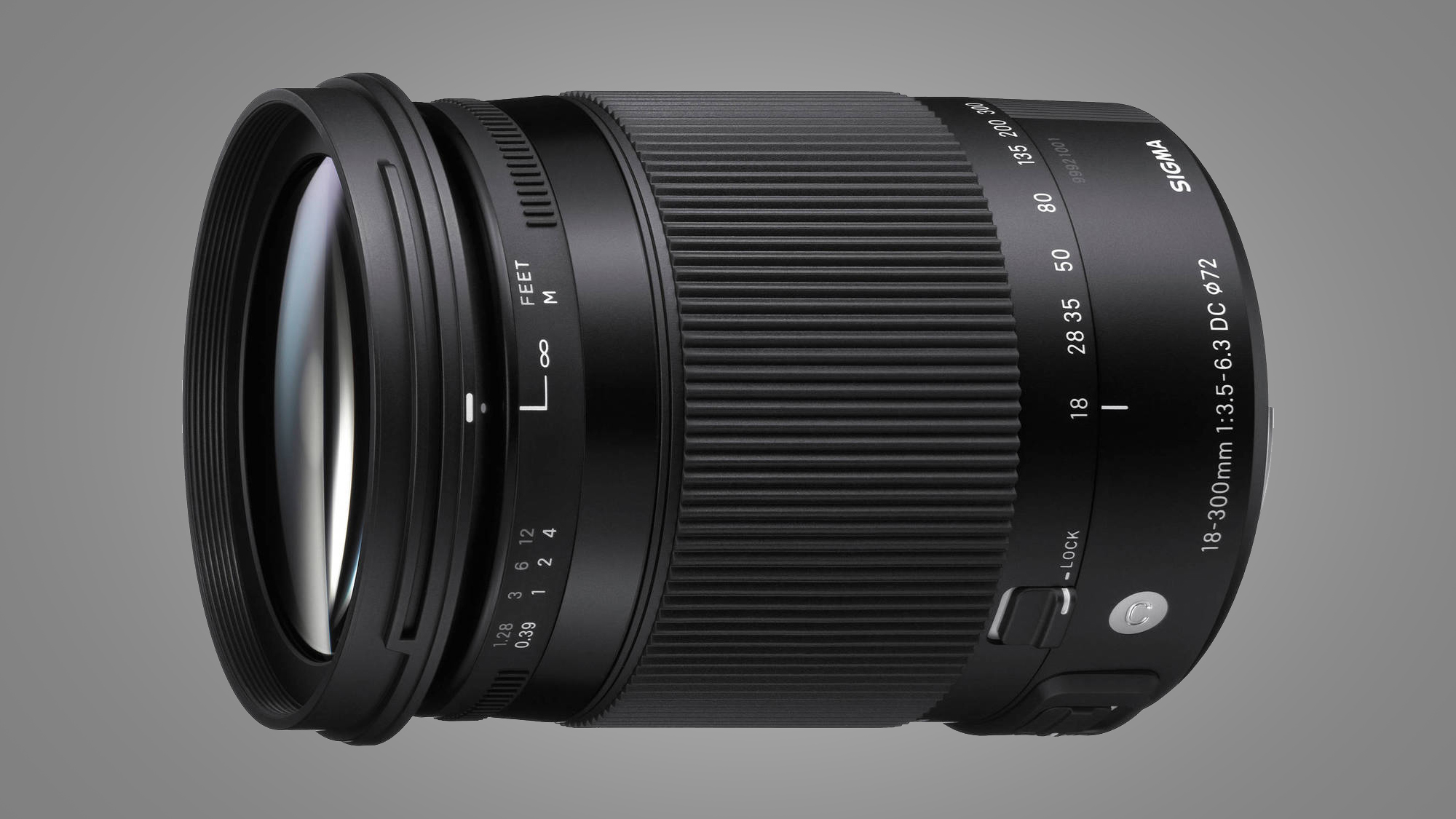
Superzoom: Sigma 18-300mm f/3.5-6.3 DC Macro OS HSM | C
Specifications
Reasons to buy
Reasons to avoid
Canon’s own-brand EF-S 18-200mm superzoom lens is pretty ancient and lacking in telephoto reach. Tamron makes some very good alternatives, with 16-300mm and 18-400mm options that go considerably wider and longer, respectively. For our money, however, this Sigma 18-300mm gives the best balance of supersized zoom range and impressively sharp image quality without being overly large or heavy. As such, it’s typical of Sigma’s ‘Contemporary’ line up of lenses.
The only minus points are that it lacks weather-seals and the focus ring rotates during autofocus, but it’s sufficiently far forward so that you can easily keep your fingers clear. All in all, it’s the ideal travel lens for Canon APS-C format DSLRs and a great all-rounder for whenever you need to keep swapping between wide-angle and telephoto focal lengths, and everything in between.
Great-value option: Tamron 18-200mm f/3.5-6.3 Di II VC
Remarkably compact and lightweight for a superzoom, the new edition of Tamron’s 18-200mm makes an excellent all-in-one ‘travel lens’, and is unbeatable value at the price.

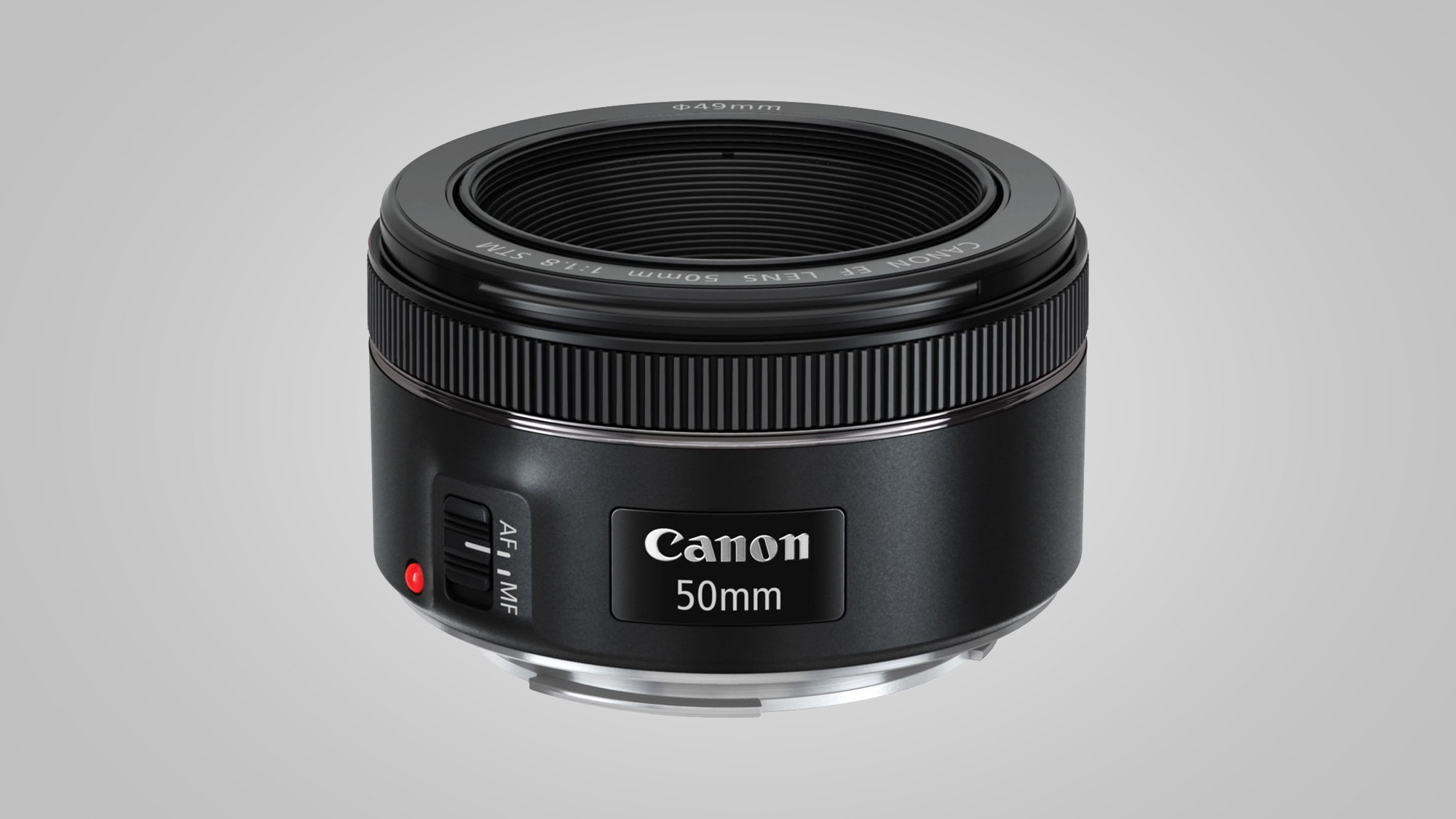
Portrait prime: Canon EF 50mm f/1.8 STM
Specifications
Reasons to buy
Reasons to avoid
Ask any Canon user what their first prime lens was and they’ll probably tell you it was the 50mm f/1.8. Small, affordable and a great way to get to grips with the demands of large-aperture photography, it’s long been a go-to for those looking to spice up their photography for cheap.
The good bits first: it’s not unusual to find this 160g beauty for fantastically low prices, and it’s great. In our tests, chromatic aberration was well-controlled, even when shooting wide open. It’s sharp, too – it isn’t magnificent at f/1.8, but if you can close down as little as two stops you’ll be rewarded with an f/4 lens that makes a great job of any image you manage to catch focus on. Because it’s virtually weightless, it handles really nicely and feels like a natural fit whether you use it on a low-end APS-C body or a high-end body with a vertical grip.
Of course, it’s not perfect. One of the changes between this version of the 50mm f/1.8 and the previous model is the addition of the STM (Stepper Motor) focus system. This means that even in manual focus, the focus ring is a fly-by-wire system that drives the focussing elements of the lens.
Canon’s claim that the system is 'near silent' is pretty accurate, but for video work 'near silent' just doesn’t cut it. Manually focussing the lens results in a noise that sounds a bit like a coat being zipped up, so make so mistake about it – there is no silent way to use this lens, which means videographers who capture audio on-board should look elsewhere. If you capture audio externally or are a stills photographer looking to invigorate your photography with a small, fast, affordable lens, this should still be at the top of your list.

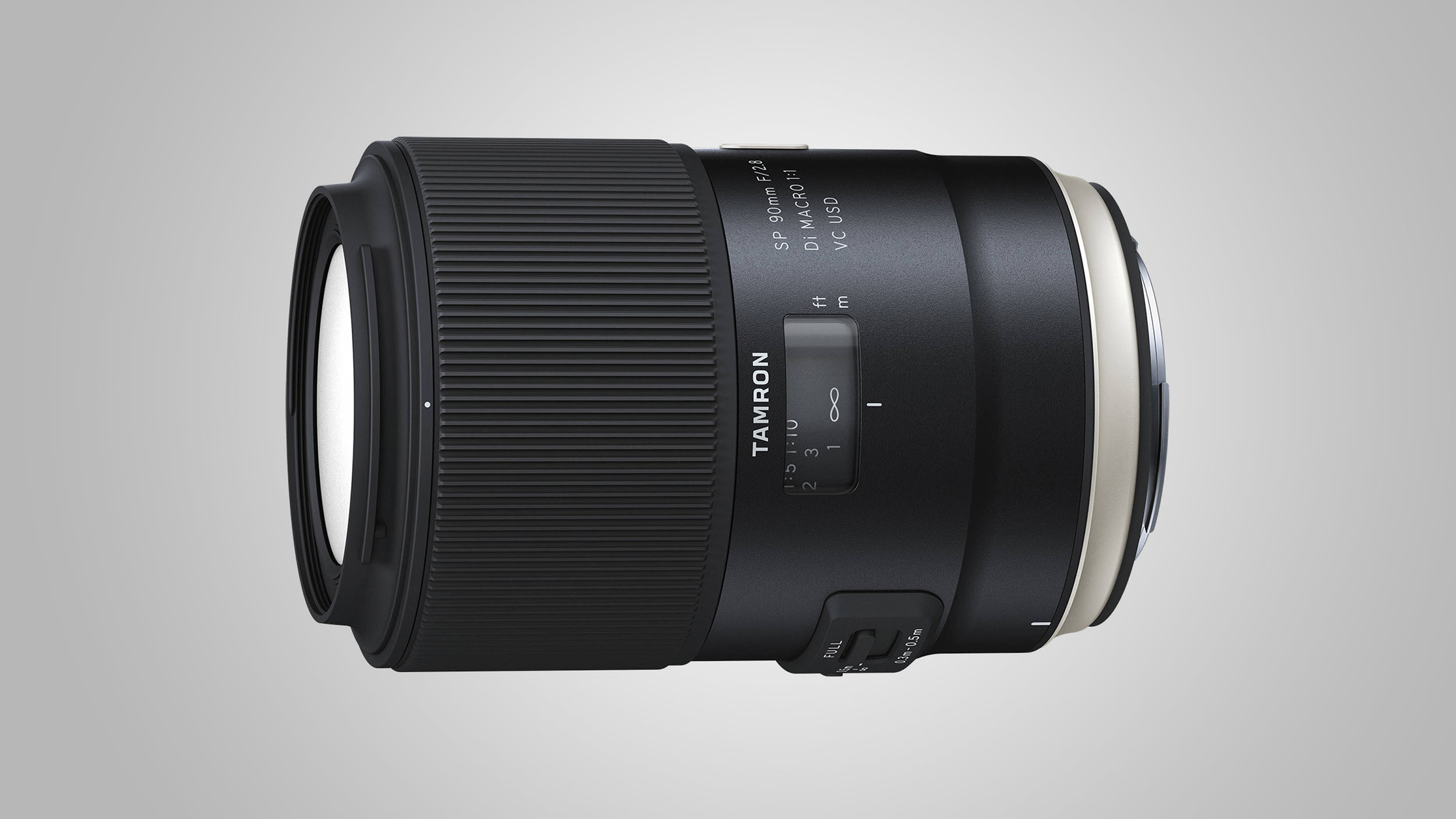
Macro prime: Tamron SP 90mm f/2.8 Di VC USD Macro
Specifications
Reasons to buy
Reasons to avoid
Following on from a preceding Tamron 90mm macro lens of the same name, the latest version has higher-grade glass, dual nano-structure coatings, improvements to the weather sealing, plus a fluorine coating on the front elements. The biggest improvement comes in the form of a redesigned autofocus system which has been specifically optimized for close-up shooting, plus a new 'hybrid' optical stabilizer that has been designed for counteracting axial shift (that's up-down or side-to-side movement) as well as the usual angular vibration (aka wobble). It's fairly similar to Canon's flagship EF 100mm f/2.8L Macro IS lens, but our tests reveal that the Tamronh as the edge for image quality, plus it has the bonus of being less expensive, too.
Great-value option: Sigma 105mm f/2.8 EX DG OS HSM Macro
Lacking the hybrid stabilization system and the weather-sealing of the Tamron, this Sigma never-the-less has excellent handling and great image quality.


Budget telephoto zoom: Canon EF 70-300mm f/4-5.6 IS II USM
Specifications
Reasons to buy
Reasons to avoid
Canon makes a low-budget EF-S 55-250mm lens (see below) which is designed specifically for APS-C format cameras. For superior build quality, image quality and all-round performance, this full-frame compatible EF 70-300mm is a better buy for APS-C cameras, with the advantage that you can still use it if you upgrade to a full-frame camera later on.
Highlights include a revolutionary ‘Nano USM’ autofocus system that’s super-fast for stills while offering smooth and virtually silent transitions when shooting video. Handling is excellent, with a 4-stop image stabilizer and a neat multi-function digital display that can cycle through focus distance, focal length and stabilizer effectiveness at the touch of a button. Like most other non L-series Canon lenses, it lacks weather-seals and you need to buy the hood as an optional extra which, in this case is surprisingly pricey (ET-74B, $45/£76).
Great-value option: Canon EF-S 55-250mm f/4-5.6 IS STM
For a telephoto zoom lens, this Canon optic designed especially for APS-C cameras is happily compact and lightweight. Some of the weight saving comes from it having a plastic, rather than metal mounting plate, but that's not too bad a compromise to make for the price. As we've seen with other STM lens, the stepping motor autofocus system works well for stills and movie recording. Throughout the zoom range sharpness is good - even when shooting at the widest aperture - while the image stabilizer gives you about three stops.

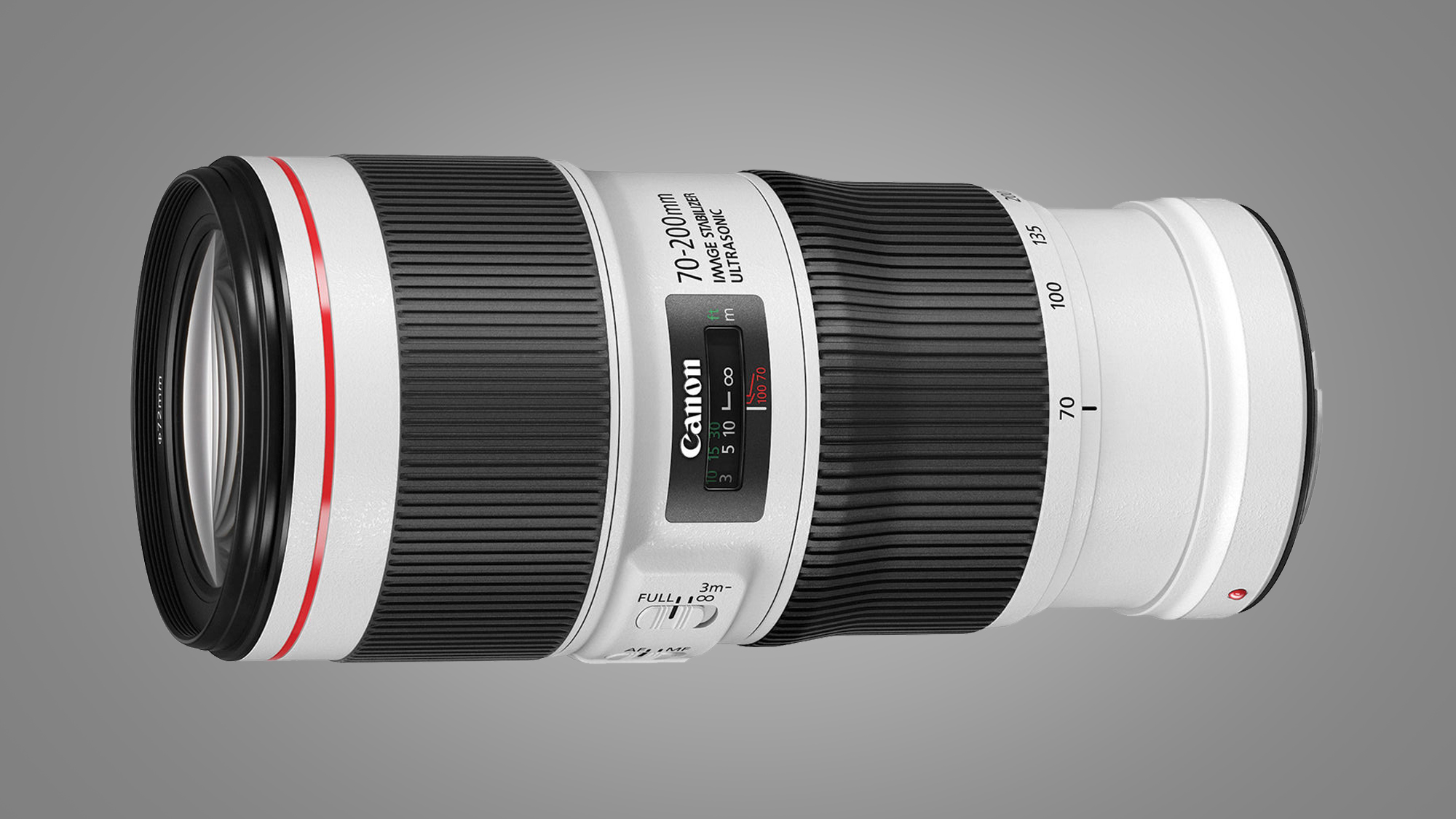
Fast telephoto zoom: Canon EF 70-200mm f/4L IS II USM
Specifications
Reasons to buy
Reasons to avoid
The Mark II edition of Canon’s 70-200mm stabilized L-series represents a major upgrade over the original. Like our top choice of budget telephoto zoom, this one is full-frame compatible but really bumps up the quality. Typical of L-series lenses, it’s built to a pro-grade standard and features rock-solid, weather-sealed build quality, along with exotic handling characteristics.
The conventional ring-type ultrasonic autofocus system is amazingly fast and whisper-quiet, while the image stabilizer is first-class with up to 5-stop effectiveness and three switchable modes for static and panning shots, as well as an option that only applies stabilization during actual exposures. This can make it easier to track erratically moving objects in the viewfinder. Naturally it doesn’t have the telephoto reach of a 70-300mm lens but gains a faster aperture that remains constant throughout the zoom range. And the 200mm focal length is equivalent to 320mm in full-frame terms, when shooting on an APS-C format camera, thanks to Canon’s 1.6x crop factor.
Great-value option: Tamron 70-210mm f/4 Di VC USD
Similarly compact and lightweight, Tamron’s 70-210mm lens has the same f/4 constant aperture rating but is much less expensive to buy. It includes a more basic 4-stop stabilizer, weather-seals and, again, a tripod mounting ring is available as an optional extra.

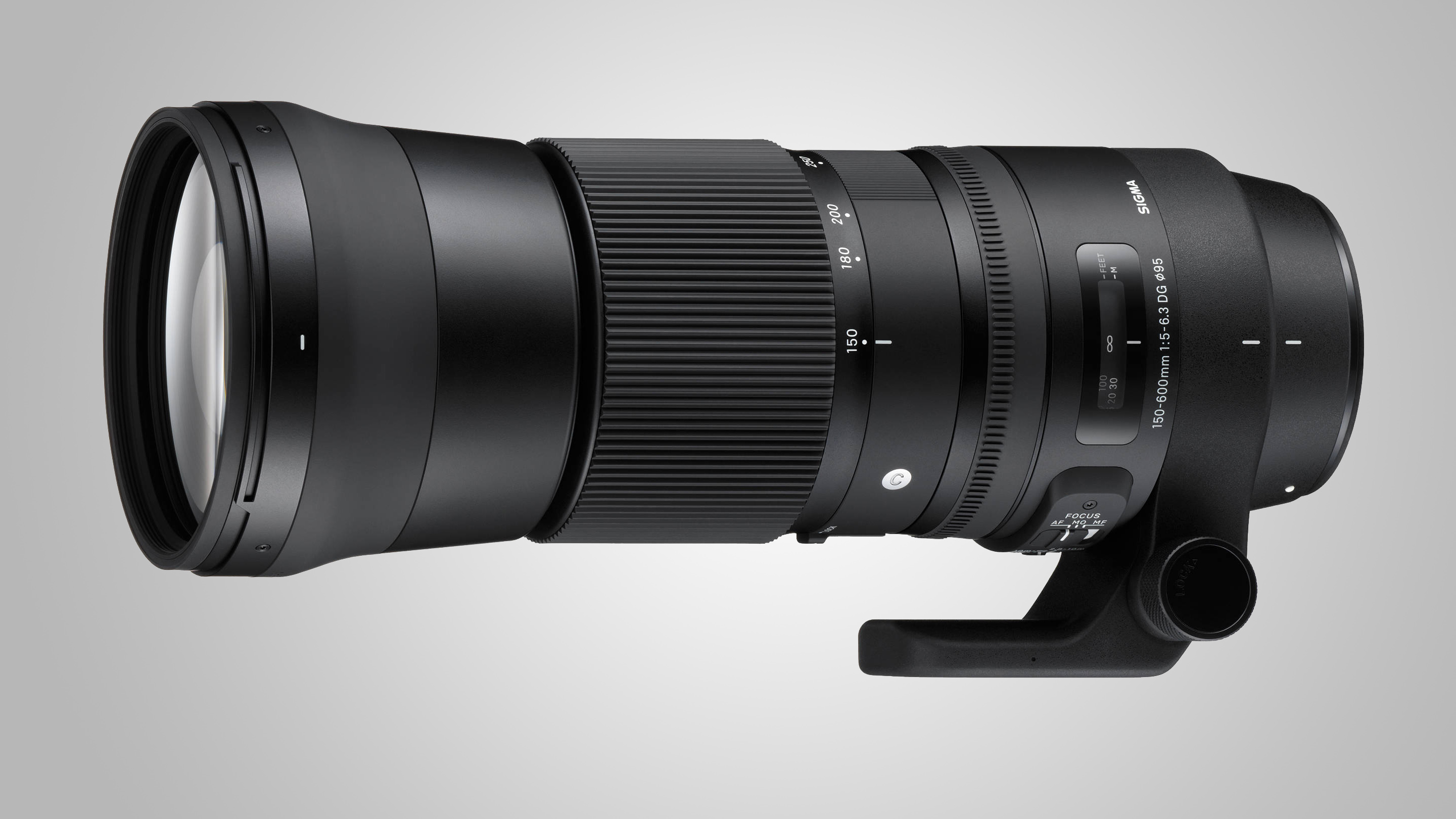
Super-telephoto zoom: Sigma 150-600mm f/5-6.3 DG OS HSM | C
Specifications
Reasons to buy
Reasons to avoid
Despite the fact that this lens delivers a ridiculous long effective focal length of 960mm at its longest end of its zoom range when used with an APS-C format body, it's surprisingly not too much of a monster. Coming in at less than 2kg, it's the ideal option for wildlife photographers - indeed it's almost a kilogram lighter than Sigma's 150-600mm Sport lens. You get many of the same features as its bigger sibling, including dual, switchable autofocus modes, dual-mode stabilization and a dual-position autofocus range limiter. You also get the same zoom lock mechanism which lets you lock the lens at any marked (numbered) position. As for performance, that's great too with fantastic autofocus speeds, stabilisation and sharpness. Handling is also great, too.
Great-value option: Sigma 100-400mm f/5-6.3 DG OS HSM | C
The maximum focal length is comparatively modest but Sigma’s Contemporary class super-telephoto zoom is nicely compact and lightweight, making prolonged handheld shooting less of a strain.

- Best Canon camera
- Best wide-angle lenses for Canon DSLRs
- Best telephoto lenses for Canon DSLRs
- Best super-telephoto lenses for Canon DSLRs
- Best macro lenses for Canon DSLRs
- Best portrait lenses for Canon DSLRs
- 1
- 2
Current page: Best Canon lenses for APS-C DSLRs
Next Page Best Canon lenses for full-frame DSLRsSign up for breaking news, reviews, opinion, top tech deals, and more.